
Duke of Atholl, named after Atholl in Scotland, is a title in the Peerage of Scotland held by the head of Clan Murray. It was created by Queen Anne in 1703 for John Murray, 2nd Marquess of Atholl, with a special remainder to the heir male of his father, the 1st Marquess.

Earl of Southesk is a title in the Peerage of Scotland. It was created in 1633 for Sir David Carnegie, an Extraordinary Lord of Session. He had already been created Lord Carnegie of Kinnaird in 1616 and was made Lord Carnegie, of Kinnaird and Leuchars, at the same time he was given the earldom. These titles are also in the Peerage of Scotland. The earldom is named after the River South Esk in Angus. Carnegie's younger brother John Carnegie was given the corresponding title: earl of Northesk. The earl of Southesk also holds the Scottish feudal title of Baron of Kinnaird and is a baronet in the Baronetage of Nova Scotia. Kinnaird Castle, Brechin, has been the home of the earls of Southesk for several hundred years.

Lord Torphichen or Baron Torphichen is a title in the Peerage of Scotland. It was created by Queen Mary in 1564 for Sir James Sandilands.

John Campbell, 1st Earl of Breadalbane and Holland, known as Sir John Campbell, 5th Baronet from 1670 to 1681, was a member of Scottish nobility during the Glorious Revolution and Jacobite risings and also known as "Slippery John". An astutely political man, Campbell was one of the men implicated in the Massacre of Glencoe.
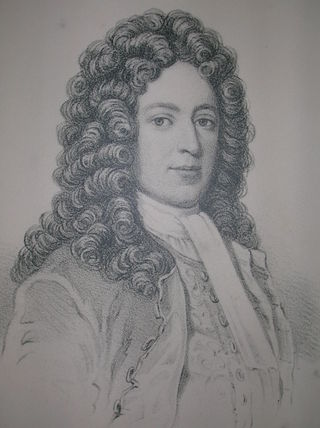
Alexander Seton Montgomerie, 9th Earl of Eglinton was a Scottish peer, lord of the Eglinton Estate.
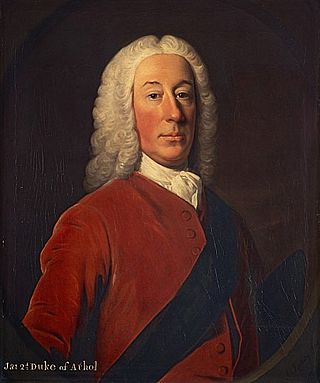
James Murray, 2nd Duke of Atholl,, styled Marquess of Tullibardine between 1715 and 1746, was the Lord of Mann, a Scottish peer, and Lord Privy Seal.
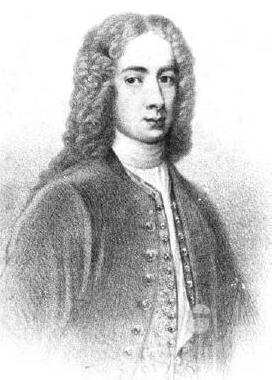
George Mackenzie, 3rd Earl of Cromartie was a Scottish nobleman.

John Hay, 2nd Marquess of Tweeddale PC was a Scottish nobleman.
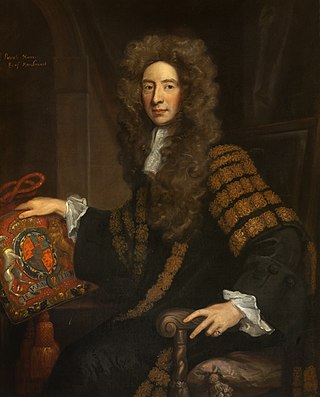
Patrick Hume, 1st Earl of Marchmont, known as Sir Patrick Hume, 2nd Baronet from 1648 to 1690 and as Lord Polwarth from 1690 to 1697, was a Scottish statesman. His grandfather was the poet and courtier Sir Patrick Hume of Polwarth and Redbraes who died in 1609.

Clan Home is a Scottish clan. It held immense power for much of the Middle Ages and dominated the eastern Scottish Borders. It produced no fewer than eight Wardens of the Eastern March – more than any other family.

Clan Lindsay is a Scottish clan of the Scottish Lowlands.

Clan Stewart is a Scottish Highland and Lowland clan. The clan is recognised by Court of the Lord Lyon; however, it does not have a clan chief recognised by the Lord Lyon King of Arms. Because the clan has no chief it can be considered an armigerous clan; however, the Earls of Galloway are now considered to be the principal branch of this clan, and the crest and motto of The Earls of Galloway's arms are used in the Clan Stewart crest badge. The Court of the Lord Lyon recognises two other Stewart/Stuart clans, Clan Stuart of Bute and Clan Stewart of Appin. Stuart of Bute is the only one of the three clans at present which has a recognised chief.
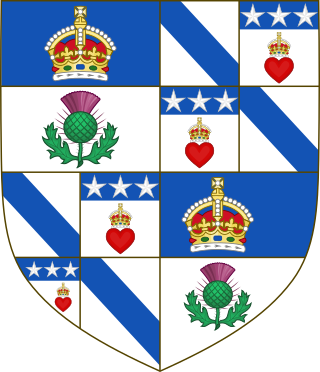
Clan Sandilands is a Scottish clan. It is also considered a sept of the larger Clan Douglas.
John St Clair, Master of Sinclair was a Scottish Army officer and Tory politician who sat briefly in the British House of Commons in 1708 before he was excluded as ineligible as eldest son of a Scottish peer. He was court-martialled and under sentence of death for the killing of two fellow officers before he escaped to serve in the Prussian army and was subsequently pardoned. He then took part as a rebel in the Jacobite Rising of 1715 and was attainted and excluded in succession to his father's property. He wrote a personal memoir of the Rising and returned to Scotland after ten years in France and the Low Countries.
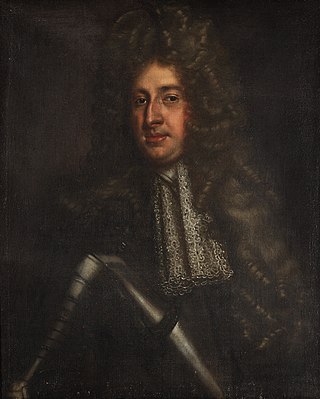
William Herbert, 2nd Marquess of Powis DL was an English peer and Jacobite supporter.
James Sandilands was a Scottish nobleman. He was the second son of Sir James Sandilands, 7th Baron of Calder. The Barony of Calder had belonged to the Sandilands family since 1348.
William Fraser, 12th Lord Saltoun, was a Scottish peer and the 11th Laird of Philorth.

James Grahme or Graham (1649–1730) was an English army officer, courtier, politician who sat in the English and British House of Commons between 1685 and 1727. After the Glorious Revolution he was involved for ten years in Jacobite schemes and plots.
George Preston was a Scottish army officer, known for his involvement in the Jacobite risings.
Nathaniel Hooke (1664–1738) was a Franco-Irish Jacobite soldier, diplomatic envoy for the King of France and a Baron in the Jacobite Peerage of Ireland.
This page is based on this
Wikipedia article Text is available under the
CC BY-SA 4.0 license; additional terms may apply.
Images, videos and audio are available under their respective licenses.
![]() This article incorporates text from a publication now in the public domain : Lee, Sidney, ed. (1897). "Sandilands, James (d.1753)". Dictionary of National Biography . Vol. 50. London: Smith, Elder & Co.
This article incorporates text from a publication now in the public domain : Lee, Sidney, ed. (1897). "Sandilands, James (d.1753)". Dictionary of National Biography . Vol. 50. London: Smith, Elder & Co.













